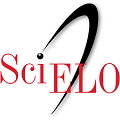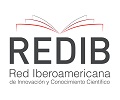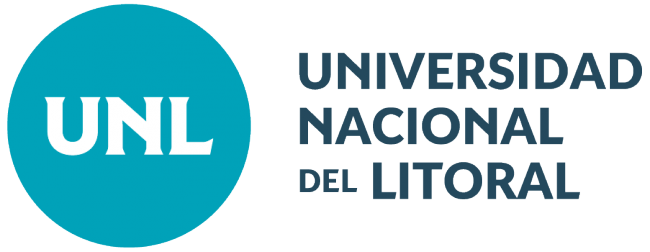Characterization and comparison of the antibacterial activity of buffalo and bovine sera
DOI:
https://doi.org/10.14409/favecv.v16i1.6671Keywords:
Bovine serum, buffalo serum, innate immunity, haemolysis, antimicrobial activityAbstract
The antibacterial activity of serum of bovine and buffaloes was evaluated in vitro indirectly by two immunohemolysis assays: (i) an unsensitized rabbit blood cells hemolysis-hemagglutination assay and (ii) and a hemolytic-kinetic of unsensitized rabbit blood cells in function of increasing serum concentrations. The serum bactericidal activity was evaluated in vitro by quantifying the reduction of the development of an Escherichia coli inoculum in a culture medium enriched with serum of both species. In the hemolysis-hemagglutination assay, the máximum haemolysis was observed until a 1:16 serum dilution for both species. The highest percentage of hemolysis was obtained with buffalo serum (84.7 ± 9.71%) with respect to bovine serum (71.0 ± 5.05%). However, no differences were found in the serum dilutions necessary to obtain 50% of the total hemolysis, being these 10.2 ± 2.48 for the serum of cattle and 11.8 ± 2.18 for the serum of buffalo. Buffalo serum reduced bacterial growth by 69.8% compared to 47.2% obtained by bovine serum. Despite these results, additional studies will be needed to corroborate these findings in vivo
References
Arya A and Goel MC. 1992. Studies on activation and levels of haemolytic complement of buffalo (Bubalus bubalis). II. Alternate complement pathway activity in serum. Vet. Immunol. Immunopathol. 30: 411-418.
Baggot JD. 2001. The physiological basis of veterinary clinical pharmacology. Ed. Blackwell Science, London. 283 pp.
Baumgarth N, Herman O, Jager G, Brown L, Herzenberg L, Chen J. 2000. B-1 and B-2 cell-derived immunoglobulin M antibodies are nonredundant components of the protective response to influenza virus infection. J. Exp. Med. 192: 271-280.
Baumgarth N, Tung J, Herzenberg, L. 2005. Inherent specificities in natural antibodies: a key to immunedefense against pathogen invasion. Semin. Immunopathol. 26: 347-362.
Baumgarth N. 2013. Innate-like B cells and their rules of engagement. Adv. Exp. Med. Biol. 785: 57–66.
Blazewicz SJ, Schwartz E, Firestone MK. 2014. Growth and death of bacteria and fungi underlie rainfall-induced carbon dioxide pulses from seasonally dried soil. Ecology 95: 1162–1172.
Costabile M. 2010. Measuring the 50% Haemolitic Complement (CH50) activity of serum. J. Vis. Exp. 37: e1923.
Dave S, Brooks-Walter A, Pangburn MK, McDaniel LS. 2001. PspC, a pneumococcal surface protein, binds human factor H. Infect. Immun. 69: 3435–3437.
Ehrenstein MR, Notley CA. 2010. The importance of natural IgM: scavenger, protector and regulator. Nat. Rev. Immunol. 10: 778-786.
Franco RS. 2012. Measurement of Red Cell Lifespan and Aging. Transfus. Med. Hemother. 39: 302-307.
Franck SM, Bosworth BT, Moon HW. 1998. Multiplex PCR for enterotoxigenic, attaching and effacing, and Shiga toxin-producing Escherichia coli strains from calves. J. Clin. Microbiol. 36: 1795-1797.
Firsov A, Sergey N, Vostrov S, Shevchenko A, Cornaglia G. 1997. Parameters of bacterial killing and regrowth kinetics and antimicrobial effect examined in terms of area under the concentration-time curve relationships: action of cipro-floxacin against Escherichia coli in an in vitro dynamic model. Antimicrob. Agents Chemother. 41: 1281-1287.
Giacomino N, Cerra M, Stiefel S, Gumiy D, Notaro U, Buffa E,
Baroni E, Formentini E. 2011. Actividad bactericida intrínseca de suero bovino sobre cepas de Escherichia coli y Staphylo-coccus aureus. Revista FAVE - Sección Ciencias Veterinarias 10: 45-57. doi.org/10.14409/favecv.v10i2.1540
Giacomino N, Cerra M, Gumiy D, Stiefel S, Notaro U, Baroni E, Formentini E. 2012. Pharmacokinetic-pharmacodynamic modeling of antibacterial activity of cephalexin on Escherichia coli in presence of canine serum. Rev. Med. Vet. (Tolouse) 163: 431-440.
Goutelle S, Maurin M, Rougier F, Barbaut X, Bourguignon L, Ducher M, Maire P. 2008. The Hill equation: a review of its capabilities in pharmacological modelling. Fundam. Clin. Pharmacol. 22: 633-48
Grumach AS, Ceccon ME, Rutz R, Fertig A, Kirschfink M. 2014. Complement profile in neonates of different gestational ages. Scand. J. Immunol. 79: 276-281.
Hangartner L, Zinkernagel RM, Hengartner H, 2006. Antiviral antibody responses: the two extremes of a wide spectrum. Nat. Rev. Immuol. 6: 231–243.
Horstmann RD, Sievertsen HJ, Knobloch J, Fischetti VA. 1988. Antiphagocytic activity of streptococcal M protein: selective binding of complement control protein factor H. Proc. Nat. Acad. Sci. 85:1657-1661.
Jaskowski TD, Martins TB, Litwin CM, Hill H. 1999. Comparison of Three Different Methods for Measuring Classical Pathway Complement Activity. Clin. Diag. Lab. Immunol. 6: 137-139.
Matson K, Ricklefs R, Klasing K. 2005. A hemolysis-hemagglutination assay for characterizing constitutive innate humoral immunity in wild and domestic birds. Develop. Comp. Immunol. 29: 275-86.
Mayer M. 1967. Complement and complement fixation. In: E. Kabat & M. Mayer (eds.), Experimental Immunochemistry, 2nd ed. Charles Thomas, Springfield. pp. 133-240
Moreno-Indias I, Dodds AW, Argüello A, Castro N, Sim RB. 2012. The complement system of the goat: haemolytic assays and isolation of major proteins. BMC Vet. Res. 8: 91-100.
Motulsky HJ, Ransnas LA. 1987. Fitting curves to data using nonlinear regression: a practical and nonmathematical review. FASEB J. 1: 365-374.
Lindoro AGB. 2010. Reacción hemolítica aguda. Rev. Mex. Med. Tran. 3: 18-21.
OIE - World Organisation for Animal Health. 2008. Pruebas para comprobar la esterilidad y la ausencia de contaminación de los productos biológicos. Capítulo 1.1.9. (pp. 1-11). En: Manual de la OIE sobre animales terrestres.
Oyekan PP and Barta O. 1980. Hemolytic assay for goat (caprine) and swine (porcine) complement. Vet. Immunol. Immunopathol. 1: 317-328.
Ochsenbein A, Zinkernagel R. 2000. Natural antibodies and complement link innate and acquired immunity. Immunol. Today 21: 624-630.
Prasadarao NV, Blom AM, Villoutreix BO, Linsangan LC. 2002. A novel interaction of outer membrane protein A with C4b binding protein mediates serum-resistance of Escherichia coli K1. J. Immunol. 169: 6352-6360.
Siroski P, Merchant M, Parachú Marcó MV, Piña CI, Ortega HH. 2010. Characterization of the serum complement activity of the broad-snouted caiman Caiman Latirostris (Crocodilia: Alligatoridae). Zool. Stud. 49: 64-70.
Siroski P, Russi N, Ortega H, Formentini E. 2015. In vitro evaluation of synergistic activity between ciprofloxacin and broad snouted caiman serum against Escherichia coli. Research in Veterinary Science. 98: 98-105.
Wooster DG, Maruvada R, Blom AM, Prasadarao NV. 2006. Logarithmic phase Escherichia coli K1 efficiently avoids serum killing by promoting C4bp-mediated C3b and C4b degradation. Immunology 117: 482–93.
Downloads
Published
How to Cite
Issue
Section
License
FAVE Sección Ciencias Veterinarias ratifies the open access model, in which contents (in full) are available free to anyone in the internet. The costs of production and publication are not transfered to the authors. This policy intends to break social and economical barriers that generate inequities in the access to information, and for the publication of research results.
All articles can be accessed at http://bibliotecavirtual.unl.edu.ar/publicaciones/index.php/FAVEveterinaria/issue/current/, under license Creative CommonsAtribución-NoComercial-Compartir Igual 4.0 Internacional.










